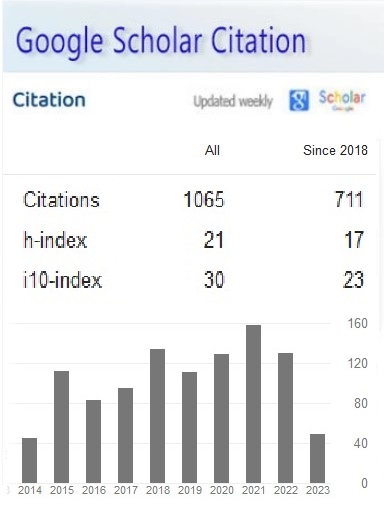Exploratory Data Analysis and Visualization for Business Analytics
Keywords:
Abstract
The advantages of doing exploratory data analysis have been discussed in this article. We have gone through the typical data preprocessing procedures to understand the data and prepare it for modeling. In this research, we intend to become familiar with the most extensively utilized predictive modeling techniques and the fundamental principles underlying these techniques. Developing statistical or machine-learning models to generate predictions based on data is an example of predictive modeling, which is creating these models. We will use one typical example to make our research more tangible and demonstrate how the performance of various models varies when applied to the same data set. Exploratory data analysis will be covered in depth here, so prepare for that! In the following, we will discuss comprehending and validating the data.
References
Dekkati, S., & Thaduri, U. R. (2017). Innovative Method for the Prediction of Software Defects Based on Class Imbalance Datasets. Technology & Management Review, 2, 1–5. Retrieved from https://upright.pub/index.php/tmr/article/view/78
Desamsetti, H. (2016). Issues with the Cloud Computing Technology. International Research Journal of Engineering and Technology (IRJET), 3(5), 321-323.
Desamsetti, H., & Mandapuram, M. (2017). A Review of Meta-Model Designed for the Model-Based Testing Technique. Engineering International, 5(2), 107–110. https://doi.org/10.18034/ei.v5i2.661
Gutlapalli, S. S. (2016a). An Examination of Nanotechnology’s Role as an Integral Part of Electronics. ABC Research Alert, 4(3), 21–27. https://doi.org/10.18034/ra.v4i3.651
Gutlapalli, S. S. (2016b). Commercial Applications of Blockchain and Distributed Ledger Technology. Engineering International, 4(2), 89–94. https://doi.org/10.18034/ei.v4i2.653
Gutlapalli, S. S. (2017a). Analysis of Multimodal Data Using Deep Learning and Machine Learning. Asian Journal of Humanity, Art and Literature, 4(2), 171–176. https://doi.org/10.18034/ajhal.v4i2.658
Gutlapalli, S. S. (2017b). The Role of Deep Learning in the Fourth Industrial Revolution: A Digital Transformation Approach. Asian Accounting and Auditing Advancement, 8(1), 52–56. Retrieved from https://4ajournal.com/article/view/77
Gutlapalli, S. S. (2017c). An Early Cautionary Scan of the Security Risks of the Internet of Things. Asian Journal of Applied Science and Engineering, 6, 163–168. Retrieved from https://ajase.net/article/view/14
Mandapuram, M. (2016). Applications of Blockchain and Distributed Ledger Technology (DLT) in Commercial Settings. Asian Accounting and Auditing Advancement, 7(1), 50–57. Retrieved from https://4ajournal.com/article/view/76
Mandapuram, M. (2017a). Application of Artificial Intelligence in Contemporary Business: An Analysis for Content Management System Optimization. Asian Business Review, 7(3), 117–122. https://doi.org/10.18034/abr.v7i3.650
Mandapuram, M. (2017b). Security Risk Analysis of the Internet of Things: An Early Cautionary Scan. ABC Research Alert, 5(3), 49–55. https://doi.org/10.18034/ra.v5i3.650
Thaduri, U. R., Ballamudi, V. K. R., Dekkati, S., & Mandapuram, M. (2016). Making the Cloud Adoption Decisions: Gaining Advantages from Taking an Integrated Approach. International Journal of Reciprocal Symmetry and Theoretical Physics, 3, 11–16. https://upright.pub/index.php/ijrstp/article/view/77
Thodupunori, S. R., & Gutlapalli, S. S. (2018). Overview of LeOra Software: A Statistical Tool for Decision Makers. Technology & Management Review, 3(1), 7–11.
Downloads
Published
How to Cite
Issue
Section
License
Copyright (c) 2018 Asian Journal of Applied Science and Engineering

This work is licensed under a Creative Commons Attribution-NonCommercial 4.0 International License.








